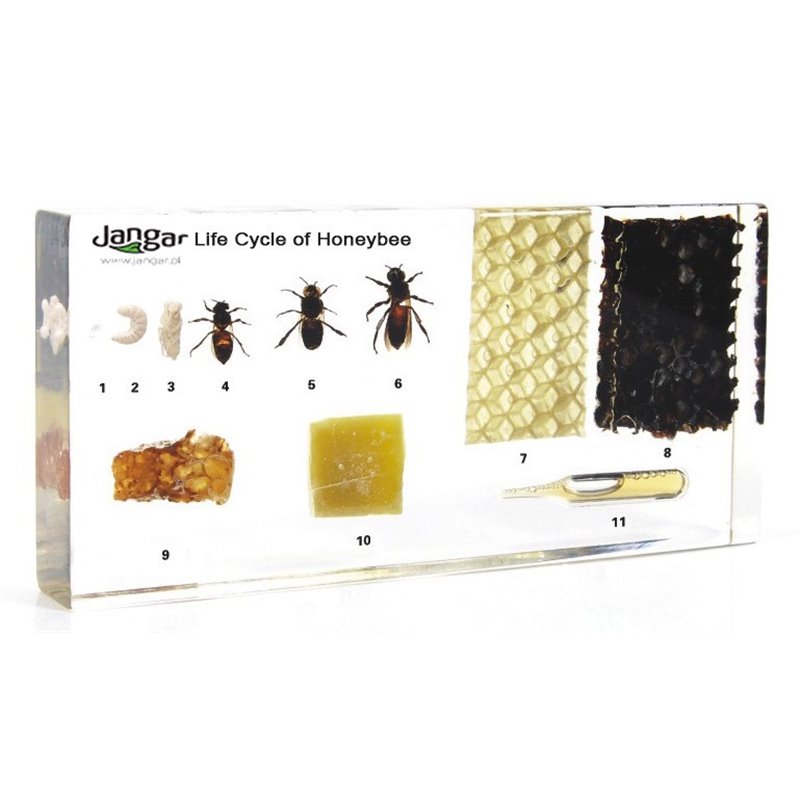Life Cycle of Honeybee and Bee Products - 11 specimens embedded in acrylic block
Product reference: BIO000753
Tax incl.: zł105.00
Description
11 natural specimens are embedded in a transparent acrylic block to show the honeybee development stages and bee products:
1 - Eggs; 2 - Larvae; 3 - Pupa; 4 - Worker Bee; 5 - Drone; 6 - Queen Bee; 7 - Comb foundation; 8 - Worker foundation; 9 - Queen cell; 10 - Beeswax; 11 - Honey.
Block packaged in a bubble pocket and placed in a lockable cardboard box. Teaching aid dimensions: 14 x 6.4 x 1.8 cm.
To know more about bees...
Bees are vital to the health of ecosystems and human agriculture. They pollinate around 70% of the world’s flowering plants and about 35% of global food crops, including fruits, vegetables, and nuts. This pollination supports biodiversity and food production, making bees crucial for ecological balance and food security. Without bees, many plants would struggle to reproduce, leading to reduced crop yields and less biodiversity.
Bee Organization and Social Structure.
Bees, particularly honeybees, live in highly organized colonies with a complex social structure:
Queen Bee. The single reproductive female responsible for laying eggs. She can lay up to 2,000 eggs per day during peak season.
Worker Bee. Non-reproductive females that perform all tasks necessary for colony survival, such as foraging for nectar and pollen, nursing larvae, cleaning, and defending the hive. They communicate using the “waggle dance” to share information about food sources.
Drones. Male bees whose primary role is to mate with a queen from another hive. They do not participate in other colony activities.
This division of labour and clear hierarchy ensure the efficiency and survival of the colony. The cooperation and adaptability of bees make them one of the most organized and effective insect societies in nature. Their decline due to habitat loss, pesticides, and climate change poses a significant threat to global food security and biodiversity.
Honeybees are essential pollinators and play a crucial role in agriculture and biodiversity. They produce several valuable products, among others the ones listed below.
Honey. A natural sweetener made from nectar, rich in nutrients and used in food and medicine.
Beeswax. A substance used in candles, cosmetics, and polish.
Royal Jelly. A nutrient-rich secretion used as food for the queen bee and valued for its health benefits.
Propolis. A resinous substance with antimicrobial properties, used in health products and as a natural remedy.
Bee Pollen. Collected from flowers, it is rich in proteins, vitamins, and minerals, often used as a dietary supplement.
These products support human health and have numerous applications in food, cosmetics, and medicine.






































































































































































































































































































































